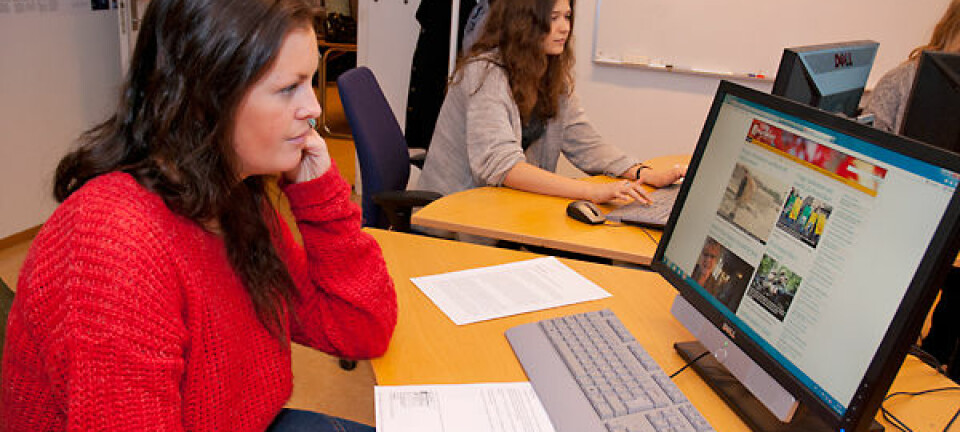
The media world will suffer even more
The past decade hasn’t been kind to the media world, with regular mass firings of media staff and online media struggling to gain a foothold. Things will only get worse, and that’s a threat to the informed citizen.
We are in the midst of one of the greatest and most paradoxical life changes as informed citizens in a democracy.
We’re all better informed than ever before, and our access to information is easier than ever before, with the internet, Facebook, radio, TV, newspapers, free newspapers and apps all fighting for our attention.
Meanwhile, the big media corporations are fighting a life-or-death struggle precisely because we have access to everything everywhere.
This is the theme of a new report from the Reuters Institute for the Study of Journalism at Oxford University, authored by Rasmus Kleis Nielsen, an assistant professor of communication at Roskilde University, Denmark.

In the report Ten Years that Shook the Media World, Nielsen looks at the development in eight countries in the period 2000-2009.
The report says that many media users’ habits are still dominated by ‘old’ media such as linear TV, FM radio and newspapers. And although advertising revenues are making their way onto digital platforms like web and mobile, the advertising share for these platforms is still disproportionate to the media consumption they actually represent.
This means that the advertising revenue and the reader figures that used to finance a team of journalists is no longer present to the same extent. Instead, the advertisers have moved over to Google and Facebook, and newspapers have ended up in a death spiral, where they either give away their journalism free of charge online or are only read by a dying segment of subscribers.
“This is serious,” says Nielsen, “because a vast majority of the journalism we see on television, read online or hear on the radio stems from newspapers.”
A democratic problem
Newspapers have previously been and may also in the future be run on a slighter scale than has been the norm in certain parts of the Western world.
The researcher sees this as a democratic problem, because regardless of how little faith you have in journalists, and no matter how lame many people find online news stories, it’s still the journalists who are responsible for a high public level of information and for ensuring that those in power don’t get away with just anything.
“When the news media live up their role in a democracy, they empower the public by keeping them informed about public affairs,” he says.
“When something like the 9/11 attacks takes place, the journalists are the first ones to answer and publish the questions who, what, where and when.
“And when something seemingly trivial but potentially important takes place in city councils, boards, unions or elsewhere, it’s the journalists who have a professional interest in listening to the parties and sometimes reporting issues of public interest to a much larger audience.”
Don’t just blame the internet
Although things have been hard up to now, we’re only beginning to see the full implications that the new digital technologies have on our media image.
Although the internet has played a major part in this development, it is far from the only reason for the newspaper downturn.
Since World War II, newspapers in England, France and the US have seen a drop in circulation. And since the 1980s, newspapers in Finland, Germany and Italy have also experienced declining circulation figures.
Up to the year 2000, the annual drop was around 5-10 percent. After 2000, when the internet had become public property, the drop accelerated to 10-20 percent. So the decline had already started before the world went online.
From 2000 to 2009, the proportion of Americans who went online increased from 43 to 75 percent. In the same period, US newspapers saw a 25-percent drop in circulation figures, the newspaper industry’s total revenue fell by 36 percent and journalistic staff was reduced by 17 percent.
But it wasn’t only the spread of the internet that characterised this period. It was also marked by two major financial crises, first the dot.com crash and then the current financial crisis – along with an intensified struggle for the readers’ attention.
India, for instance, had five TV channels in 2000; today it has more than 700. The major TV stations have also experienced falling ratings in this period. In fact, the drop in TV audiences is far greater than the drop in newspaper readers. The three biggest TV stations in the US lost 33 percent of their viewers in this period; in England this figure is 30 percent and in Finland and France it was 25 percent.
It is, however, still possible to reach a mass audience. Events such as 9/11 and the opening of the Beijing Olympics in 2008 gathered huge audiences.
Better when combined
Things look a bit better if we look at the total share of readers and viewers. In 2010, the BBC reached 81 percent of the British population via TV, radio and the internet.
Similarly, the famous newspaper The New York Times, although hit hard by the advertising downturn, has a total readership via apps, web, international editions and translated articles that’s much greater than its print newspaper readership has ever been.
Rather than getting all our information from a single news medium, we switch between new and old media. But not as much as one would think, considering that we predominantly live in the digital world.
When people from a variety of nationalities are asked to rank their primary source of news, a vast majority of them say television, followed by newspapers and the internet relatively far behind.
In a multinational study from 2006 of people’s preferred sources of news, 50-60 percent of respondents in countries like the US and the UK said TV, followed by 20 percent who said radio and 10 percent who said the internet.
More recent studies show that the internet is gaining more ground, but not as rapidly as many would think. The figures also reveal that when people get their news on the internet, it’s typically from the websites of the major news outlets.
Northern European papers have the brightest future
Nielsen believes that especially Northern European newspapers – whose business models consist of equal parts adverts and subscribers – can still manage to build new and stable business models with lower earnings.
“Newspapers have previously been and may also in the future be run on a slighter scale than has been the norm in certain parts of the Western world,” he says.
“The typical Northern European newspapers, which are based on a subscription model, have dealt best with the situation, and with their good brand and their strong newsrooms, they are equipped to find a way forward with a smaller business on multiple platforms.”
New media image
The report concludes that the ever-increasing digitalisation of both media consumption and advertising in the coming years will present existing media companies with even greater business challenges than they have faced up to now. It will also challenge existing forms of news journalism and media policies even more than it has in the early years of digital media.
”Although things have been hard up to now, we’re only beginning to see the full implications that the new digital technologies have on our media image,” says the researcher.
“Journalists, media executives and media politicians will need to face up to the fact that tomorrow’s media will be radically different from those we have inherited from the 20th Century.”
------------------------------------
Read the Danish version of this article at videnskab.dk
Translated by: Dann Vinther








